At the time of its completion, it was simultaneously the largest example of Beaux-Arts architectural styling and the tallest train station in the world.

RESURRECTION: MICHIGAN CENTRAL STATION
Having been designed by the same architects involved in the building of New York’s now world-famous Grand Central Terminal, it was, and is, simply known as “Michigan Central Station,” and while that may feel like a misnomer to those who believed its moniker to have been derived from an allusion to its geographic location within the state, or rail network, it wasn’t.

In fact, while some will praise him as a railroad magnate, with others chiding him as the first of the American robber-barons, the station was built to service Cornelius Vanderbilt’s Michigan Central Railroad. Also known as the MCRR, the railroad served Michigan as an independent subsidiary of the more expansive New York Central Railroad and was one of many railroads that connected Michigan to the rest of the country, and Canada.
What many don’t know, is that it wasn’t the first Michigan Central Station in Detroit.
Nearly a century before the area surrounding 3rd and West Jefferson would become the home of the Detroit Red Wings’ Joe Louis Arena, the original Michigan Central Station was erected.
Built in 1884 by the same individuals responsible for designing and erecting the Times Square building in New York, it was praised as the “Pride of Detroit,” and its Romanesque Revival architecture leant a stark resemblance to something of a medieval castle. However, on December 26th of 1913, a fire erupted, and within the first few hours it was known that the station could no longer serve its intended purpose.
Fortunately, as the demand for rail travel had grown wildly, as early as 1908 plans had already commenced to construct a new station, and less than four hours after fire ravaged the original Michigan Central Station, 5:20 PM saw a train bound for Bay City as the first to depart the new, not-yet-completed, Michigan Central Station, with the first arrival, a train from Chicago, coming only an hour later.
The Detroit Tribune would commend the railroad’s quick action, stating that trains were seamlessly arriving and departing the new station before the Firefighter’s hoses had even been disconnected at the smoldering site of the original Michigan Central Station, but it came at a cost.
What would have been an extravagant event to christen the new engineering marvel that towered over Detroit was cancelled, and the final few of the 18-floors that housed office space for Michigan Central Railroad staff as its headquarters would never be completed, still, in spite of this, the Railroad’s gamble had paid off, and at the height of its usage, the station saw more than 200 trains per day moving everyone from common passengers to celebrities, dignitaries, soldiers, and even entire sports teams as they’d travel from city to city, vying for championships, which Detroit based teams had won 19 times during the life of the station.
However, in spite of a minor resurgence in rail travel during the gas shortages of the late 70’s and into the 80’s, the prevalence of automobiles, and the advent of Dwight D. Eisenhower’s interstate highway system in 1956, had already signaled the beginning of the end for rail travel in America, and on January 5th, 1988, at 11:30 AM, train 353, the final Amtrak train bound for Chicago, departed Michigan Central Station.
The next three decades would see the once proud symbol of Detroit fall further into decay, as haphazard plans were discussed that would’ve seen the iconic station repurposed into a casino, or even a new headquarters for the Detroit Police Department, but the cost prohibitive nature of a restoration ensured that none of those concepts would come to fruition.
Having passed closely by so many times when in Detroit, I’d often taken time to snap cell-phone photos, chronicling the urban decay that possessed its own charm and beauty. I’d seen the station used as the focal point for a drift-racing event in 2013, and as a backdrop in several films. In 2015, after a freight elevator had been installed within the facility, I stood in the shadow of the building, in awe, while windows were being installed throughout the 18-story tower, a sign that many speculated it would soon be sold.
I remained optimistic, but reserved- equipped with a realistic understanding of what would be required to resurrect the depot that had found itself added to the National Register of Historic Places in 1975. Fortunately, a move that would serve to spare its demolition time and again, much to the chagrin of many in the community who claimed it to be an eye-sore.
Still, it awaited someone- anyone- to breathe new life into it, and my hope was diminishing.
That is until 2018, when Bill Ford, Executive Chairman of the Ford Motor Company, had announced that Michigan Central Station had been acquired and it would become the new headquarters for the Ford Motor Company.
Admittedly, it was a bittersweet moment for me; As a lifelong “GM Guy,” it was hard to think of this iconic structure being the headquarters for what I’ve been conditioned to perceive as one of “my” brand’s greatest nemeses, but on the other hand, having known that the previous owner, Matty Maroun, would have rather seen the building lie in disrepair than sell, I was elated that there was the potential it could finally be resurrected.
For six years, I followed along with news stories, pictures, videos, social media posts, and admired from a distance as I heard inspiring stories from within. When I’d pass through, I’d see the changes.
None of the irony was lost on me. While Henry Ford’s obsession with the railroad was well chronicled, even acquiring his own railroad, the Detroit, Toledo & Ironton, that would operate its own passenger trains from Michigan Central Station. Unfortunately, it was his product, through his mass production methodology, that would serve to help render passenger rail travel commercially unviable in the United States. The resulting decline would see the abandonment of this iconic building, however, the company bearing his name would then eventually acquire it at a reported cost of $90M to resurrect it to its former glory the tune of $950M more. Ford Taketh Away, and Ford Giveth Back?
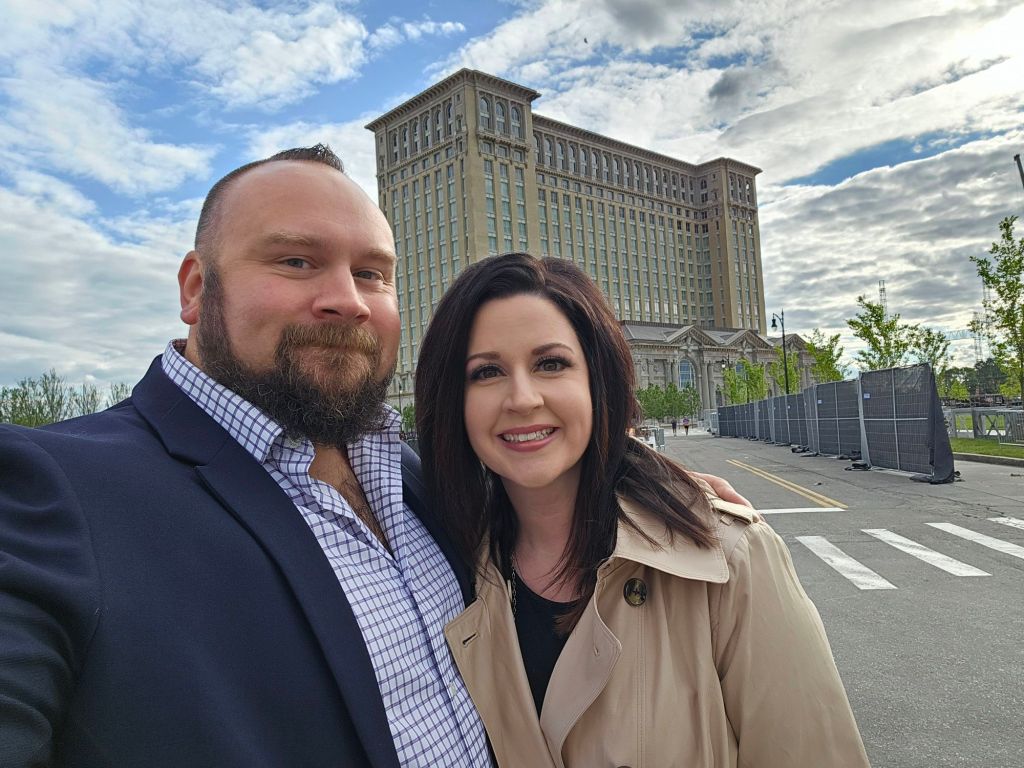
Following a night in which a huge concert event that featured Michigan artists like Eminem, Diana Ross, and Jack White alongside the Detroit Symphony Orchestra commemorated the grand re-opening of the station; something not afforded when it was rushed into service in late 1913, my wife and I were granted the opportunity to tour the station thanks to a few lifelong friends (Thank you, Pat & Sabrina!).
A sign of technological progress and advancement over the last century, and far removed from the paper tickets once exchanged to board trains from this very station, our QR code emblazoned tickets were scanned from our cellphones, and we were granted access.

To say it was a visceral experience almost pales in comparison to how it actually felt. As I set foot on the beautifully refinished floors, and I gazed upon the vastness from within this structure that I’d admired so earnestly from afar for years, I was overcome with emotion. In fact, at several points throughout the tour, admittedly, I wept.
As I stood in what was once the lobby of a hustling and bustling train station that saw 4,000 people pass through each day, I appreciated the beautifully grandiose musical score that had been tastefully selected to be played throughout the tour, and I appreciated it being occasionally punctuated by seemingly original recordings of station announcements, such as “New York Central Wolverine, now arriving, Track 16.”

Pausing to listen to each one, I had to wonder if they had been recreated, or if someone was able to source original announcements that would’ve once echoed throughout these same halls.
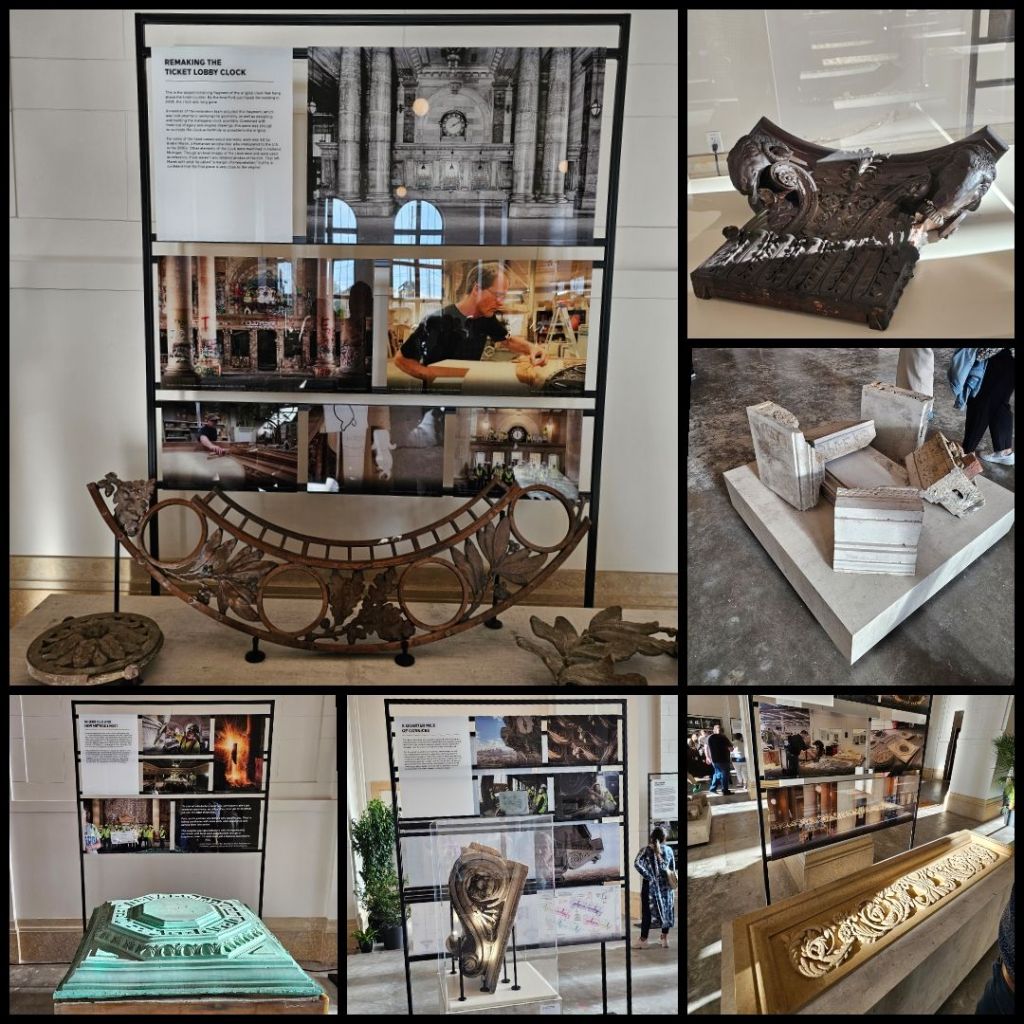
On display were countless artifacts that illustrated the painstaking efforts that were undertaken to faithfully recreate each and every detail, with genuine efforts given to utilize any, and every original item and material possible.
Although a plea was issued for those who possessed any original artifacts from Michigan Central Station to return them, with no questions asked, the team chronicled how they embraced modern technology to three-dimensionally scan, and re-create whatever no longer existed from examples, or fragments, they did have.
Amazingly, their pleas would be answered as numerous items would be returned, most notably the Carriage House Clock. Although it was assumed, like much of what had been stolen, that the 700-pound clock had succumbed to scrappers, it had actually been miraculously removed by an individual who wished to save it from such a fate.
“I left it leaning against a burned-out building… between the train tracks and 4470 Lawton. Please send two men and a truck immediately. It has been missing for over 20 years and is ready to go home. Thank you so much.”
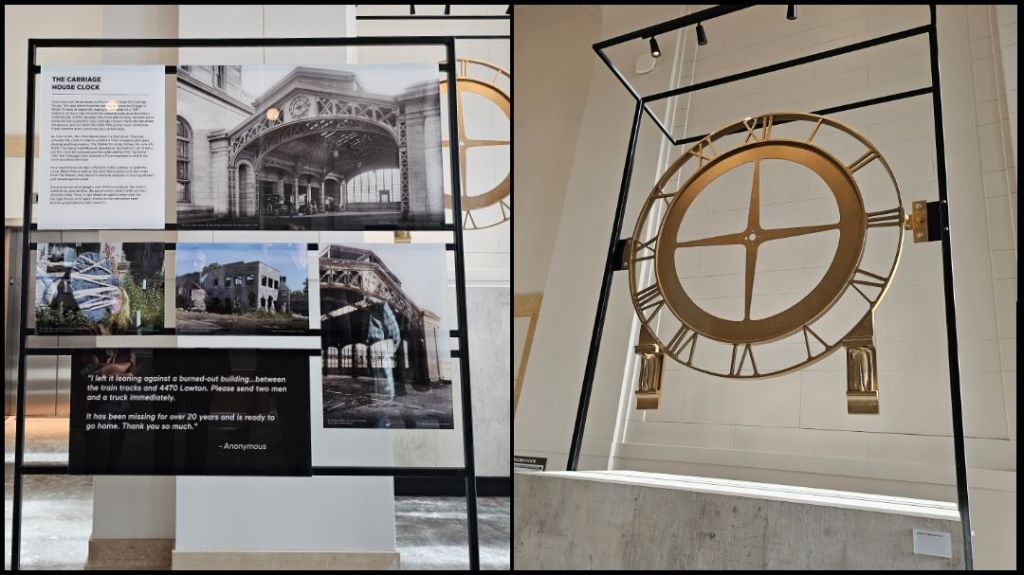
I gazed upon the clock, and again, I was overcome with emotion, this time because I felt an overwhelming sense of appreciation that there are still good people in this world who simply wish to preserve history.
As I slowly paced through the 111-year-old building, I attempted to soak in every detail. The once time-stained Corinthian columns were returned to their original beauty, and the tiled ceiling had been meticulously hand-cleaned, with 8.2 million feet of grout utilized to replicate what would have existed when the station first opened.

In display cases were items found within, or associated with the station- Old train tickets, railroad lanterns, stock certificates, even sections of plaster that had been preserved with graffiti intact, each of them telling another piece of the story, with one such artifact, a Stroh’s Bohemian Beer bottle, standing out from the rest. Within it was found a note, “Dan Hogan and Geo. Smith stuck this. (indecipherable word) of Chicago 1913.”
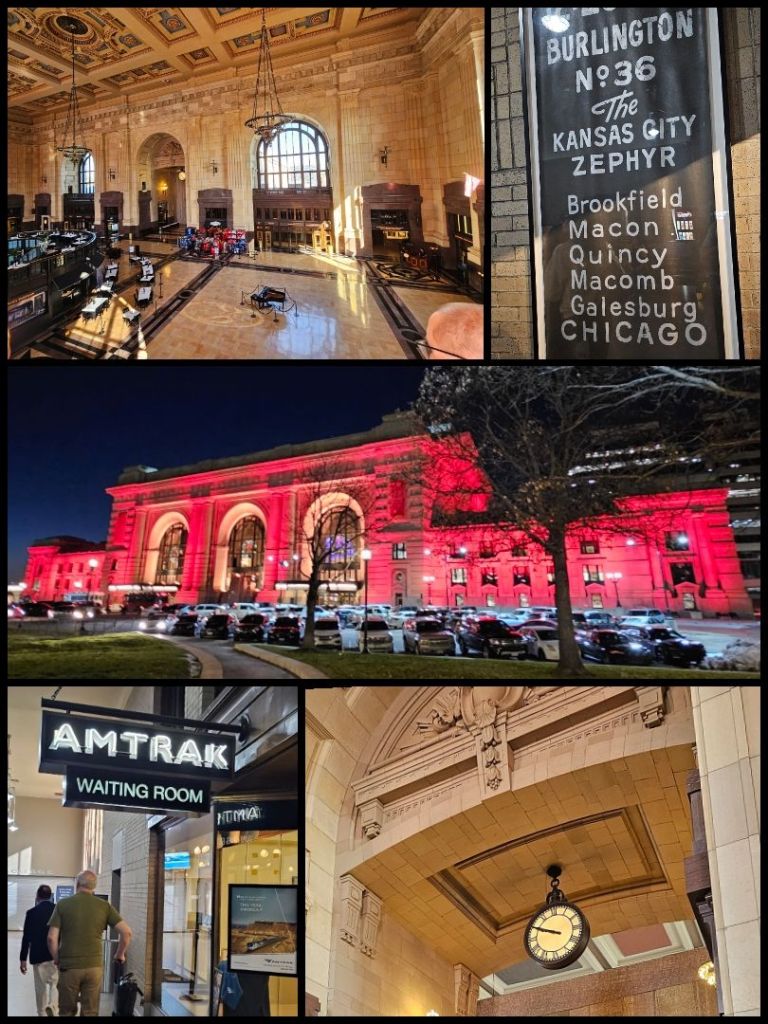
Still, I couldn’t help but dream. As a railroader, I yearn for any and all industry growth, and after having received an absolutely brilliant, behind-the-scenes tour of another iconic masterpiece, Kansas City Union Station, by none other than Station CEO George Guastello in 2023, I saw the historical parallel.
In Kansas City, just like in Detroit, you had an iconic train station that had fallen into disrepair amidst a stark decline in ridership with Amtrak ceasing operations in 1985. What would eventually follow, was an incredible resurgence and restoration effort to faithfully recreate Union Station into what it once was thanks to five counties within Missouri and Kansas City who voted to approve a 1/8 cent sales tax. The remaining funding required for the $250M restoration project was provided through private investors, and federal funding, with the restoration completed in 1999, and Amtrak resuming rail service in 2002.
Amtrak still serves Kansas City Union Station to this day, with myself counted amongst the more than 110,000 riders who have pass through annually.
Could such a service be restored to Michigan Central Station? Could riders soon be connected from Detroit to Chicago, or Kansas City, or New York once again? One can hope…
After nearly an hour, we made our way through the exit, passing a section that had been intentionally left with graffiti adorning the walls, which I felt was a beautiful touch to remind us, and future generations, just how far this building had fallen from grace, and how far it had come.
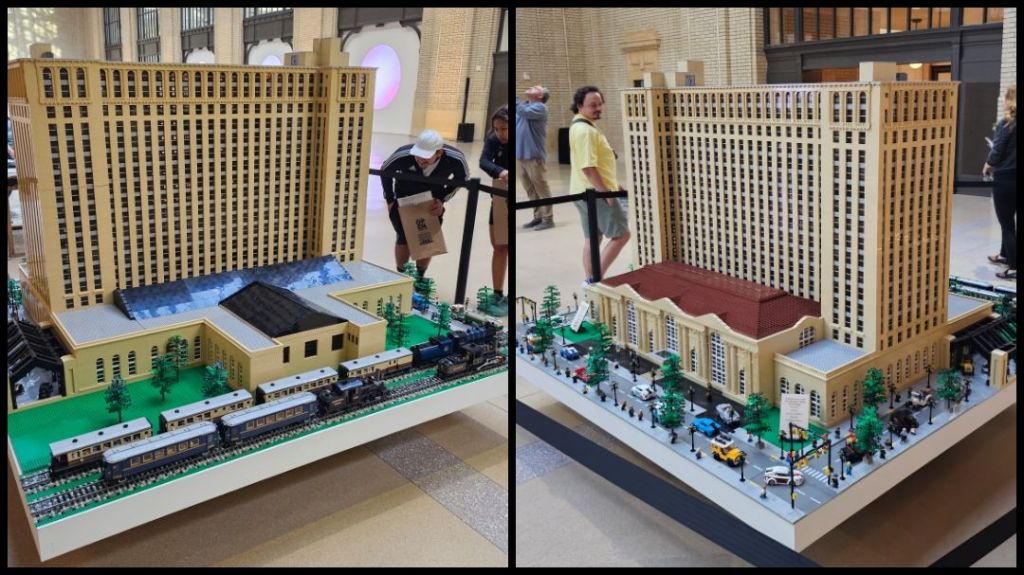
I took a few final looks at the station as we walked away, and I left with a sense of pride in what they had been able to accomplish. The last time I had been this close to the iconic structure, it had appeared as if the challenges required for anyone to restore such a building would be insurmountable, but I’m reminded of another time when people taunted Ford with an insurmountable challenge.
In looking at Michigan Central Station, just like in 1966 when Ford was told there was no way they could possibly beat Ferrari at Le Mans, the Ford Motor Company spared no expense to come out on top.
Once again, they had.
Worthwhile additional Reading:
Michigan Central Station: A comprehensive history from Historic Detroit
Michigan Central Station Depot: A comprehensive history from Historic Detroit





